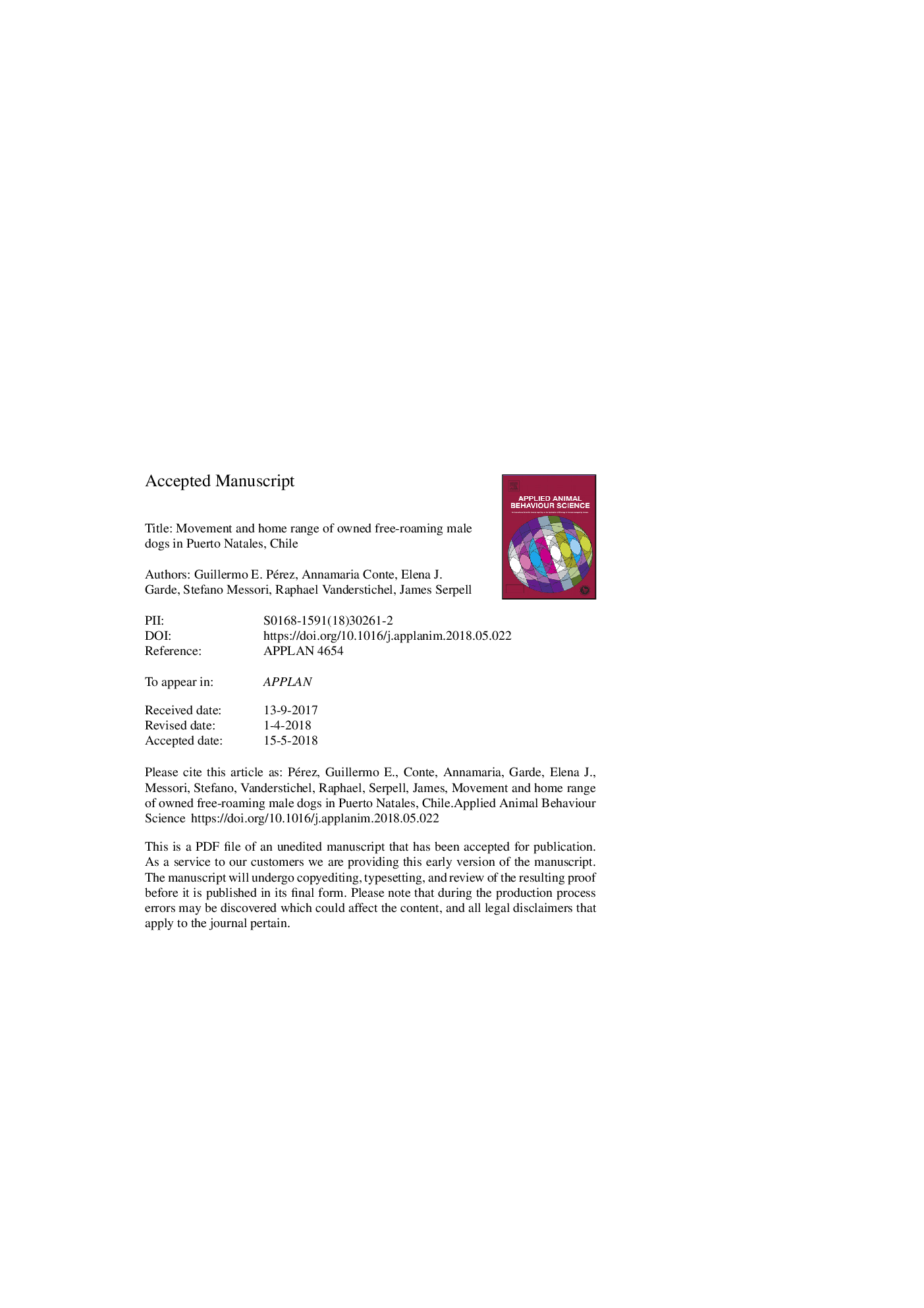| Article ID | Journal | Published Year | Pages | File Type |
|---|---|---|---|---|
| 8882716 | Applied Animal Behaviour Science | 2018 | 28 Pages |
Abstract
Free-roaming dogs (FRDs) pose a significant health threat to humans, other animals and the environment. Yet, the effects of their movements and habitat use within cities and adjacent rural areas are poorly known, especially in relation to predation and the transmission of diseases that can impact human health (i.e., cystic echinococcosis and rabies). We explored the temporal and spatial distribution of owned FRDs for a remote Patagonian city surrounded by a grasslands rural ecosystem by superimposing GPS coordinates of tracked dogs on satellite images (Google map). Using logistic regressions, we evaluated the potential effect of age, body condition score (BCS) and distance from their initial recorded GPS fix (at or near the owner's home) to the rural boundary (RD) as predictors of home range (HR) and maximum distance (MD) travelled from home. Our study revealed that owned FRDs in Puerto Natales, Chile have a high site fidelity to the urban environment and especially their owneÅs home, seldom venturing into rural areas. We observed that even FRDs living in close proximity to the city boundary spent most of their time within the urban environment. On average, FRDs had a HR of 0.65â¯km2 (65â¯ha) and travelled a MD of 1.05â¯km. There were two individuals that travelled significantly further, and hence occupied a larger HR than the rest. Additionally, our results indicated that BCS was a predictor of HR, while age and RD were predictors of MD. These findings add to the range of predictors known to affect roaming dog HR size and used across different studies, suggesting that site-specific factors are likely affecting dog behavioral ecology. The study findings provide useful and original data on the movement ecology and site fidelity of owned FRDs in a remote city in Patagonia. We recommend that to make meaningful and cost-effective management decisions regarding owned FRDs in urban areas, future studies should also include the collection of sociocultural information on the interactions between of dogs and people.
Related Topics
Life Sciences
Agricultural and Biological Sciences
Animal Science and Zoology
Authors
Guillermo E. Pérez, Annamaria Conte, Elena J. Garde, Stefano Messori, Raphael Vanderstichel, James Serpell,
